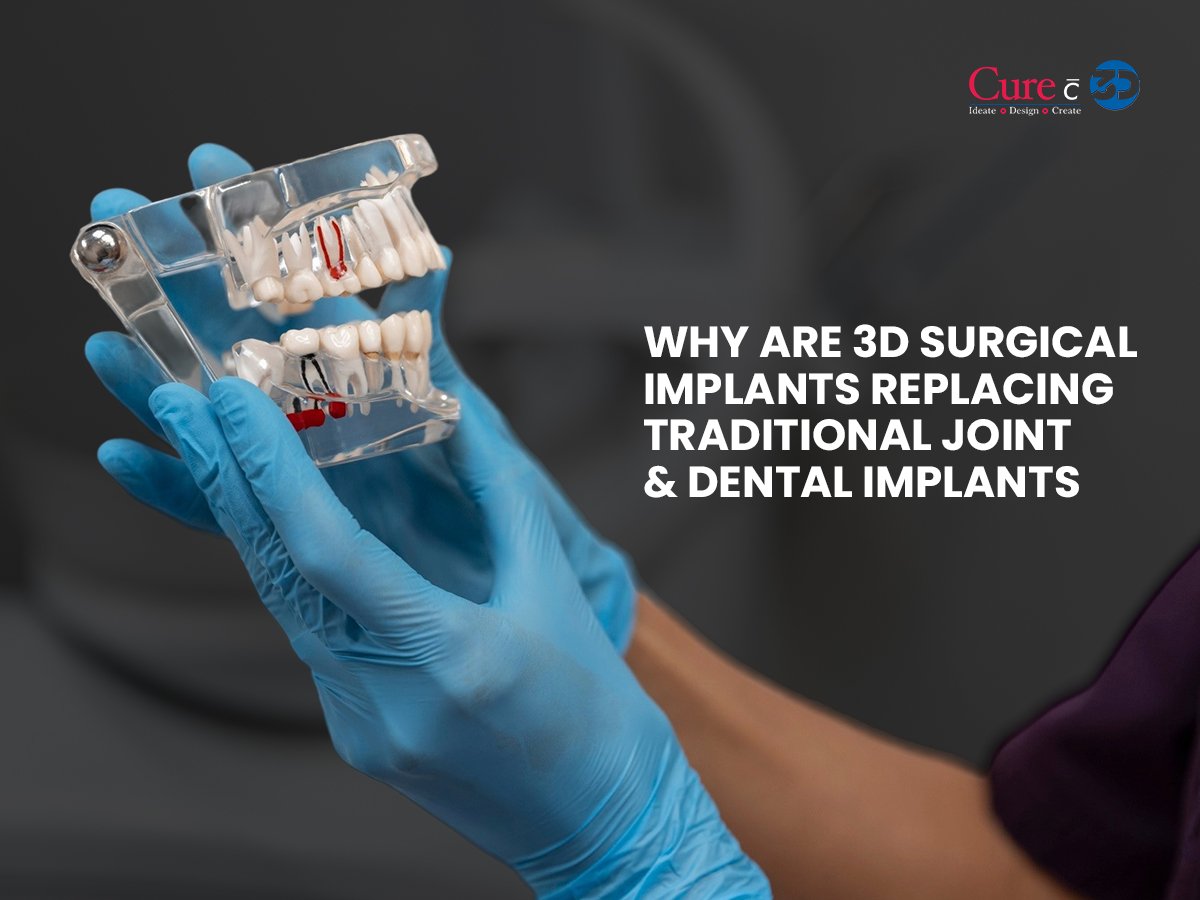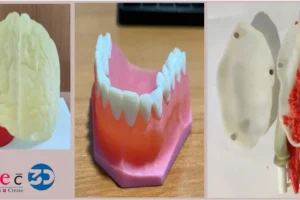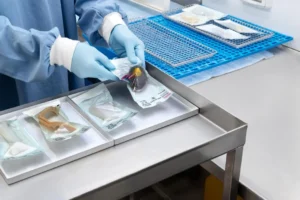For anyone struggling with joint pain, dental damage, or spinal injuries, the only dream they have is to: long-lasting relief, minimal complications, and getting back to life without limits. Surgery is often the path to relief, but traditional implants often come with their share of challenges: imperfect fits, extended recovery times, and a risk of revision surgery.
However, 3D-printed orthopedic implants have turned things around in healthcare. Designed precisely for individual patients, these advanced medical implants not only reduce recovery time but also relieve discomfort by improving the quality of life with better long-term results.. But how do they really work, and can they deliver what conventional implants sometimes can’t?
What Are 3D Orthopedic Implants?
3D orthopedic implants are medical devices made with 3D printing technology to fit a patient’s unique anatomy. Unlike traditional implants, which are manufactured in standard sizes and then adjusted during surgery, 3D implants are tailor-made from the start.
Curewith3D focuses on dental and surgical implants that are 3D printed, starting from trauma implants to spinal implants, knee and hip replacement implants, and dental implants used in dental reconstruction surgeries.
But, what makes them different?
Precision and personalization of the 3d printed implants according to the patient’s anatomy.
How Are These 3D Printed Implants Made?
The creation of a 3D orthopedic implant starts with high-resolution imaging—typically a CT or MRI scan—to capture the precise anatomy of the affected bone or joint. This scan data is converted into a digital 3D model, which serves as the foundation for designing a patient-specific implant.
Materials Used
Implants must integrate seamlessly with the body, which is why only medically approved, biocompatible materials are used. At Curewith3D, we work with:
- Titanium & Titanium Alloys (Ti6Al4V):
These are widely used for metal 3D printed implants like tibia replacements, cranial implants, spinal cages, and joint prostheses. Titanium offers an excellent strength-to-weight ratio, corrosion resistance, and osseointegration (the ability to bond with bone). - PEEK (Polyether ether ketone):
A high-performance polymer that is radiolucent (doesn’t interfere with imaging), making it suitable for spinal implants and craniofacial reconstruction. It mechanical properties of a real bone, therefore, reducing stress shielding. - Medical-grade resins & polymers:
Used for 3d printing surgical guides/jigs and 3d dental guides, especially at places that require flexibility & sterilizability.
Manufacturing Technologies
Once the design is finalized, the implant is produced using additive manufacturing, also known as 3D printing. Different 3d printing methodologies are used depending on the application:
- FDM (Fused Deposition Modeling):
Commonly used for PEEK implants and anatomical models. It extrudes thermoplastic material with high accuracy and is well-suited for non-load-bearing parts or pre-surgical planning. - SLA (Stereolithography):
Used primarily for surgical guides and dental applications, where high resolution and smooth surface finish are crucial. It cures liquid resin using UV light, enabling precise geometries.
This combination of imaging, design, material science, and precision manufacturing ensures that every 3D printed implant is optimized for strength, biological compatibility, and surgical accuracy.
Why Are 3D Surgical Implants Gaining Popularity?
Standard implants work, but they aren’t always ideal. Patients come in different shapes and sizes, and so do their injuries. That’s where 3D printing steps in.
Here are the top reasons why surgeons and patients are turning to 3D surgical implants:
- Better Fit: Customization reduces the risk of implant loosening or failure.
- Faster Surgery: With patient-specific 3d printed surgical guides/jigs, surgical procedures are quicker and more precise.
- Less Pain, Faster Recovery: The precision reduces soft tissue damage and supports quicker healing.
- Reduced Revision Rates: A well-fitting custom 3d printed implant is less likely to need correction later (because they are made according to the actual size of the patient.
Where Are These 3D Printed Implants Being Used?
The range of applications for 3D printed medical implants is growing fast:
Orthopedic Implants
These include everything from knee replacement implants and hip replacement implants to 3D spine implants. Whether it’s degenerative arthritis or trauma from an accident, custom implants can restore function more efficiently.
Trauma Implants
When bones are shattered in irregular patterns—say, from a road accident—standard plates and screws may not offer the best outcomes. 3D-printed trauma implants provide personalized solutions that match each fracture precisely.
Dental Implants
In dental implant surgery, precision is everything. Tooth implants must align perfectly with the jawbone to ensure both stability and aesthetics. Using 3D printing, dentists can create dental implants and guides that improve outcomes significantly.
Spinal Implants
For patients with scoliosis, slipped discs, or degenerative spine conditions, 3D spine implants provide anatomical support while minimizing surgical invasiveness.
Are They Safe?
Yes, 3D orthopedic implants undergo the same rigorous biocompatibility and mechanical testing as traditional implants. At Curewith3D, every implant is designed in consultation with surgeons and manufactured to meet national and international medical standards.
Additionally, custom implants tend to integrate better with bone and tissue, which may reduce complications in the long run.
What About Cost?
One of the common myths is that 3D printed implants are significantly more expensive. While the upfront cost can be slightly higher, many patients actually save money long-term due to:
- Fewer surgical revisions
- Shorter hospital stays
- Faster recovery and return to work
- Lower risk of post-surgery complications
In the context of overall treatment, a personalized implant can be a cost-effective solution.
The Role of 3D Printed Surgical Guides
Beyond implants, 3D-printed surgical guides are quietly transforming the operating room. These custom tools enable surgeons to make highly precise cuts, position implants with pinpoint accuracy, and often reduce both surgery time and anesthesia exposure. Whether it’s an orthopedic procedure or a complex dental implant, surgical guides are becoming an essential part of modern practice.
Curewith3D is at the forefront of this shift in India, equipping surgeons with patient-specific guides that enhance precision and boost confidence in the OR. By bridging cutting-edge technology with hands-on expertise, they’re helping reshape what’s possible in surgical care.
Are 3D Implants the Future of Pain Relief?
In many ways, the future is already here. The use of 3D surgical implants is growing across orthopedic, dental, and trauma care because they’re simply more aligned with the patient’s needs.
When chronic pain is due to anatomical misalignment, improper joint movement, or a failed implant, a personalized solution could offer the relief that standard options can’t.
Why Choose Curewith3D?
To restore lives, Curewith3D integrates modern technology along with adept engineers and seasoned surgeons to manufacture bespoke medical implants. If you’re looking for patient specific 3d printed customized surgical solution, we’re here to design a 3d printed solution just for you.
From 3D orthopedic implant to surgical dental implant, we offer custom solutions for surgical procedures using 3D technology. Ready to dive in?




